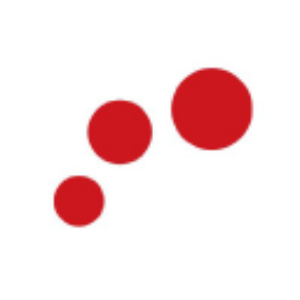NexImmune, Yale, and JDRF Extend Research Partnership for Type 1 Diabetes
- A JDRF funded grant is being used to explore the combination of NexImmune’s antigen specific nanoparticles and an anti-CD3 mAb for prevention and treatment of type 1 diabetes
GAITHERSBURG, Md., Oct. 24, 2023 (GLOBE NEWSWIRE) -- NexImmune, Inc. (Nasdaq: NEXI) announces the extension of the research partnership between NexImmune, Yale and JDRF to explore the use of NexImmune’s AIM nanoparticles in combination with an anti-CD3 mAb to tolerize, deplete or modulate diabetes antigen-specific T cells. The extension includes an additional
“We are excited with the significant progress by Dr. Kevan Herold’s lab at Yale, which has led to an additional grant by the JDRF to investigate our technology in combination with a murine surrogate of teplizumab, a T cell-specific mAb candidate,” said Kristi Jones, Chief Executive Officer at NexImmune. “The data generated to date is encouraging and demonstrate the ability of NexImmmune’s nanoparticles to specifically inhibit or eliminate T1D-causing T cells in the lymph node and pancreas.”
The JDRF award will continue to fund efforts to investigate the use of NexImmune’s AIM nanoparticles in combination with a murine surrogate of teplizumab, which has been shown to modulate the pathogenic immune response acutely. Combining anti-CD3 treatment with NexImmune’s injectable therapy provides the opportunity to target and modulate T1D antigen-specific T cells and potentially maintain their non-responsiveness with the goal to extend benefit and induce tolerance. NexImmune’s nanoparticles have the potential to further enhance the effect of anti-CD3 through modulation of the residual T1D specific T cells.
About NexImmune
NexImmune is developing novel approach to immunotherapy designed to employ the body’s own T cells to generate a specific, potent, and durable immune response. The backbone of NexImmune’s approach is a proprietary Artificial Immune Modulation (AIM™) nanoparticle technology platform. The AIM technology enables NexImmune to construct nanoparticles that function as synthetic dendritic cells capable of directing a specific T cell-mediated immune response. AIM constructed nanoparticles employ natural biology to engage, activate and expand endogenous T cells in ways that combine anti-tumor attributes of antigen-specific precision, potency and long-term persistence with reduced potential for off-target toxicities. NexImmune is focused on developing injectable AIM nanoparticle constructs and modalities for potential clinical evaluation in oncology, autoimmune disorders and infectious diseases.
For more information, visit www.neximmune.com.
About JDRF
JDRF’s mission is to accelerate life-changing breakthroughs to cure, prevent and treat T1D and its complications. To accomplish this, JDRF has invested more than
Forward Looking Statements
This press release may contain “forward-looking” statements within the meaning of the Private Securities Litigation Reform Act of 1995 that are based on the beliefs and assumptions and on information currently available to management of the Company. All statements other than statements of historical fact contained in this press release are forward-looking statements, including statements concerning the Company’s ability to regain compliance with the minimum bid price requirement for continued listing on the Nasdaq Capital Market; the impact of our workforce reduction; the enrollment, timing, progress, release of data from and results of the Company’s paused clinical trials and the expectations with respect to potential AIM INJ product candidates; the timing, progress and release of preclinical data from our AIM INJ platform programs and other preclinical research programs; the expectation of submitting an IND for NEXI-101 (injectable) in 2024; and the utility of prior preclinical and clinical data in determining future clinical results. In some cases, you can identify forward-looking statements by terminology such as “may,” “will,” “should,” “expects,” “plans,” “anticipates,” “believes,” “estimates,” “predicts,” “potential” or “continue” or the negative of these terms or other comparable terminology. Forward-looking statements involve known and unknown risks, uncertainties and other factors that may cause the Company’s actual results, performance or achievements to be materially different from any future results, performance or achievements expressed or implied by the forward-looking statements. These risks and uncertainties include, but are not limited to, the risks and uncertainties set forth in the “Risk Factors” section of our Annual Report on Form 10-K for the year ended December 31, 2022 filed with the Securities and Exchange Commission (“SEC”) on March 28, 2023, and subsequent reports that we file with the SEC. Forward-looking statements represent the Company’s beliefs and assumptions only as of the date of this press release. Although the Company believes that the expectations reflected in the forward-looking statements are reasonable, it cannot guarantee future results, levels of activity, performance or achievements. Except as required by law, the Company assumes no obligation to publicly update any forward-looking statements for any reason after the date of this press release to conform any of the forward-looking statements to actual results or to changes in its expectations.
Contacts:
NexImmune:
Chad Rubin
crubin@neximmune.com










